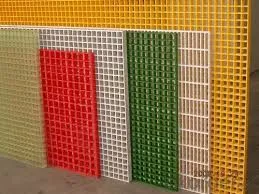
-
 Afrikaans
Afrikaans -
 Albanian
Albanian -
 Amharic
Amharic -
 Arabic
Arabic -
 Armenian
Armenian -
 Azerbaijani
Azerbaijani -
 Basque
Basque -
 Belarusian
Belarusian -
 Bengali
Bengali -
 Bosnian
Bosnian -
 Bulgarian
Bulgarian -
 Catalan
Catalan -
 Cebuano
Cebuano -
 China
China -
 China (Taiwan)
China (Taiwan) -
 Corsican
Corsican -
 Croatian
Croatian -
 Czech
Czech -
 Danish
Danish -
 Dutch
Dutch -
 English
English -
 Esperanto
Esperanto -
 Estonian
Estonian -
 Finnish
Finnish -
 French
French -
 Frisian
Frisian -
 Galician
Galician -
 Georgian
Georgian -
 German
German -
 Greek
Greek -
 Gujarati
Gujarati -
 Haitian Creole
Haitian Creole -
 hausa
hausa -
 hawaiian
hawaiian -
 Hebrew
Hebrew -
 Hindi
Hindi -
 Miao
Miao -
 Hungarian
Hungarian -
 Icelandic
Icelandic -
 igbo
igbo -
 Indonesian
Indonesian -
 irish
irish -
 Italian
Italian -
 Japanese
Japanese -
 Javanese
Javanese -
 Kannada
Kannada -
 kazakh
kazakh -
 Khmer
Khmer -
 Rwandese
Rwandese -
 Korean
Korean -
 Kurdish
Kurdish -
 Kyrgyz
Kyrgyz -
 Lao
Lao -
 Latin
Latin -
 Latvian
Latvian -
 Lithuanian
Lithuanian -
 Luxembourgish
Luxembourgish -
 Macedonian
Macedonian -
 Malgashi
Malgashi -
 Malay
Malay -
 Malayalam
Malayalam -
 Maltese
Maltese -
 Maori
Maori -
 Marathi
Marathi -
 Mongolian
Mongolian -
 Myanmar
Myanmar -
 Nepali
Nepali -
 Norwegian
Norwegian -
 Norwegian
Norwegian -
 Occitan
Occitan -
 Pashto
Pashto -
 Persian
Persian -
 Polish
Polish -
 Portuguese
Portuguese -
 Punjabi
Punjabi -
 Romanian
Romanian -
 Russian
Russian -
 Samoan
Samoan -
 Scottish Gaelic
Scottish Gaelic -
 Serbian
Serbian -
 Sesotho
Sesotho -
 Shona
Shona -
 Sindhi
Sindhi -
 Sinhala
Sinhala -
 Slovak
Slovak -
 Slovenian
Slovenian -
 Somali
Somali -
 Spanish
Spanish -
 Sundanese
Sundanese -
 Swahili
Swahili -
 Swedish
Swedish -
 Tagalog
Tagalog -
 Tajik
Tajik -
 Tamil
Tamil -
 Tatar
Tatar -
 Telugu
Telugu -
 Thai
Thai -
 Turkish
Turkish -
 Turkmen
Turkmen -
 Ukrainian
Ukrainian -
 Urdu
Urdu -
 Uighur
Uighur -
 Uzbek
Uzbek -
 Vietnamese
Vietnamese -
 Welsh
Welsh -
 Bantu
Bantu -
 Yiddish
Yiddish -
 Yoruba
Yoruba -
 Zulu
Zulu
Durable FRP Chemical Storage Tanks Corrosion-Resistant Solutions
- Data impact on chemical storage selection criteria
- Technical advantages of FRP storage systems
- Manufacturer comparison matrix
- Application-specific customization process
- Industry installation case studies
- Maintenance protocols for longevity
- Future industry developments

(chemical storage tank)
Ensuring Safety and Efficiency with Chemical Storage Tanks
Industrial operations handling aggressive substances require storage solutions that balance structural integrity with chemical resistance. The selection of appropriate vessels impacts operational safety, environmental compliance, and long-term ROI. Recent incident data reveals that 67% of chemical containment failures stem from material incompatibility, underscoring the critical nature of proper tank specification. Facilities handling acids, solvents, or alkaline compounds must prioritize corrosion resistance, with over 80% of operators now opting for non-metallic solutions when storing pH extremes below 2 or above 12.
Material Science Behind Containment Performance
Advanced fiberglass reinforced plastic (FRP) construction delivers unparalleled corrosion resistance compared to traditional materials. The multilayer laminate structure typically consists of a resin-rich inner barrier (0.25mm thickness), followed by a corrosion-resistant veil (1mm), structural reinforcement (varies by capacity), and UV-resistant exterior gel coat. This composition achieves permeation rates below 0.01g/m²/day for most hydrocarbons and maintains structural integrity at temperatures up to 200°F. Testing confirms 3x greater fatigue resistance than steel alternatives when handling thermal cycling scenarios common in chemical processing.
Industry Provider Capability Assessment
| Manufacturer | Max Pressure Rating | Temperature Range | Chemical Resistance Rating | Standard Capacities |
|---|---|---|---|---|
| Provider A | 25 PSI | -40°F to 210°F | 98% | 500-50,000 gal |
| Provider B | 15 PSI | 10°F to 190°F | 95% | 300-30,000 gal |
| Provider C | 30 PSI | -60°F to 225°F | 99.5% | 200-100,000 gal |
The pressure ratings shown represent maximum operating pressures for vertical cylindrical designs. Third-party validation confirms that tanks meeting NSF/ANSI 61 standards demonstrate 25% longer service life under sustained chemical exposure. Certifications including ASME RTP-1 and ISO 14692-2 differentiate manufacturers regarding quality control consistency.
Application-Engineered Configuration Options
Leading fabricators achieve operational precision through computer-aided design processes that optimize tank geometry for specific media characteristics. For viscous fluids above 2000 cP, engineers increase nozzle diameters by 40% and implement conical bottoms to prevent material bridging. API 650-compliant designs accommodate seismic zone requirements with specialized base ring anchors and wind girders that withstand uplift forces exceeding 120 mph. Secondary containment bunding can be integrated into the tank structure itself, reducing installation footprint by 35% while maintaining 110% volumetric containment capacity.
Performance Validation Through Case Studies
A semiconductor manufacturing facility replaced metal vessels holding 35% hydrochloric acid with FRP chemical storage tank
s, eliminating corrosion-related leaks that previously caused $250,000 annually in production downtime. Wall thickness monitoring over eight years shows less than 0.2% material degradation. In wastewater treatment applications, municipalities report 20-year service life from fiberglass storage tank installations handling chlorine concentrations up to 15%, outperforming PVC alternatives that required replacement at 12-year intervals. Mining operations utilizing custom-designed conical-bottom vessels for flocculant storage demonstrate 98% material evacuation rates without mechanical assistance.
Proactive Maintenance Methodology
Industry best practices include quarterly visual inspections focusing on potential stress points like nozzle connections, base supports, and external coatings. Advanced facilities implement IoT monitoring systems measuring wall flexure through embedded sensors that detect deviations beyond 0.5% strain. Cleaning procedures vary by stored chemical—citric acid solutions (5% concentration at 140°F) effectively dissolve crystalline buildup from mineral processing applications. When repairing minor damage, technicians follow ASTM D2563 standards for surface preparation and laminate repair, restoring structural integrity without voiding warranties from certified manufacturers.
Advancing Chemical Management Through Fiberglass Storage Tanks
As process industries confront increasingly aggressive chemical formulations, FRP storage technology continues evolving to meet containment challenges. Recent composite innovations incorporate nano-silica modified vinyl ester resins that increase abrasion resistance by 80% in slurry applications. Dual-laminate systems now combine thermoplastic barriers with structural FRP backing for handling organic solvents exceeding 300°F. The global chemical storage tank market anticipates 6.3% CAGR through 2029, driven by replacement demand and new regulatory standards mandating secondary containment. Operators prioritizing verified materials testing data and application-specific engineering will achieve optimal operational reliability.

(chemical storage tank)
FAQS on chemical storage tank
Q: What are the key benefits of using FRP chemical storage tanks?
A: FRP (Fiberglass Reinforced Plastic) chemical storage tanks offer excellent corrosion resistance, lightweight construction, and long-term durability. They are ideal for storing aggressive chemicals and withstand harsh environmental conditions.
Q: How do fiberglass storage tanks compare to traditional metal tanks?
A: Fiberglass storage tanks are non-corrosive, require less maintenance, and have a longer lifespan than metal tanks. They also resist rust and chemical degradation, making them cost-effective for industrial applications.
Q: What chemicals can be safely stored in FRP chemical storage tanks?
A: FRP tanks are suitable for acids, alkalis, solvents, and corrosive substances. Always verify chemical compatibility with the tank's resin formulation to ensure safe storage.
Q: How to maintain a fiberglass storage tank for optimal performance?
A: Regularly inspect for cracks, clean residues, and avoid mechanical impacts. Follow manufacturer guidelines for temperature limits and chemical concentrations to prevent damage.
Q: What factors determine the lifespan of a chemical storage tank?
A: Material quality, chemical exposure, environmental conditions, and maintenance practices influence lifespan. FRP and fiberglass tanks typically last 20+ years with proper care.
Latest news
-
Fiberglass Storage Tanks Durable & Corrosion-Resistant FRP SolutionsNewsJun.03,2025
-
Fiberglass Dual Lamination Products Durable GRP SolutionsNewsJun.03,2025
-
GRP Playground Equipment Durable FRP & Fiberglass Play StructuresNewsJun.03,2025
-
Molded Fiberglass Grating Durable & Corrosion-Resistant SolutionsNewsJun.01,2025
-
Rock Drilling Tools for Tunnels Heavy-Duty Specially-Designed SolutionsNewsJun.01,2025
-
GRP, Fiberglass & FRP Products for Thermal & Nuclear Power Plants Durable SolutionsNewsJun.01,2025









